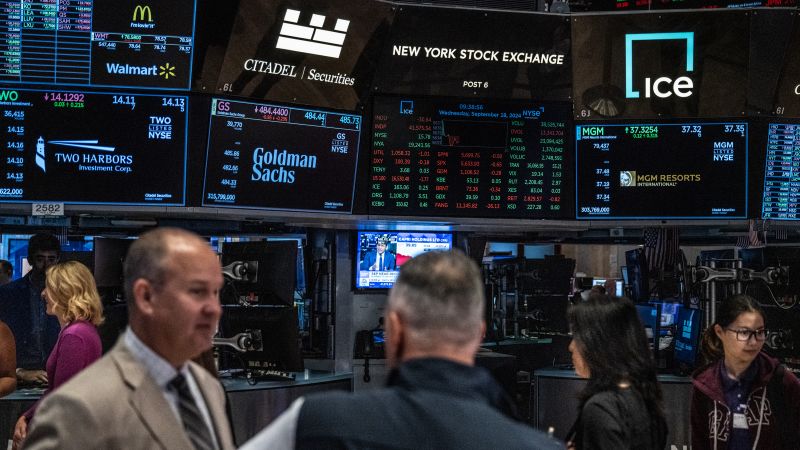The economy may be on the upswing, with gas prices falling and stock prices surging. While these factors don’t directly reflect broader economic forces such as employment and housing, they are psychologically important and are contributing to a more positive economic outlook. The average price of gas in the US is currently $3.21 and could fall below $3 by the end of October, which can lead to improved presidential approval ratings and boost consumer confidence. US stocks hit record highs after the Fed’s interest-rate cut, signaling a positive trend for the overall economy.
In addition to falling gas prices and surging stock prices, inflation and high interest rates are also normalizing. The Fed recently slashed interest rates for the first time in four years, making it easier for businesses to borrow money and for consumers to manage their finances. Unemployment remains low, around 4%, and wage growth has been outpacing inflation for a year and a half, which is positive news for consumers and the economy as a whole. All of these factors together bode well for the economic outlook.
The term “vibecession” was popularized in 2022 to describe the disconnect between the perceived state of the economy and the reality for many Americans. High prices and high interest rates were causing demoralization, despite the presence of plentiful jobs and economic growth. Interest rates play a significant role in shaping economic sentiment, and falling inflation rates and interest rates are finally starting to register in people’s minds, leading to a more positive economic outlook.
However, the housing crisis remains a major challenge for the economy. Shelter costs are high for renters, and potential buyers are facing obstacles such as high prices, low supply, and high mortgage rates. While the Fed’s rate cut may help address some of these issues, the housing crisis is a complex problem that will take time to resolve. There is a need for as many as 7 million new housing units to stabilize the market, and both government policies and economic trends will play a role in addressing this challenge.
Mortgage rates have been decreasing, potentially dropping below 6%, but this could further strain housing supply as more buyers enter the market. The shortage of homes has led to record-high prices, with the median existing-home sales price reaching $416,700 in August. While there are policies and economic trends that can help address the housing crisis, it remains a deeply rooted challenge with supply issues dating back to the 2008 recession. It will take time and concerted effort to stabilize the housing market and make housing more affordable for all Americans.


